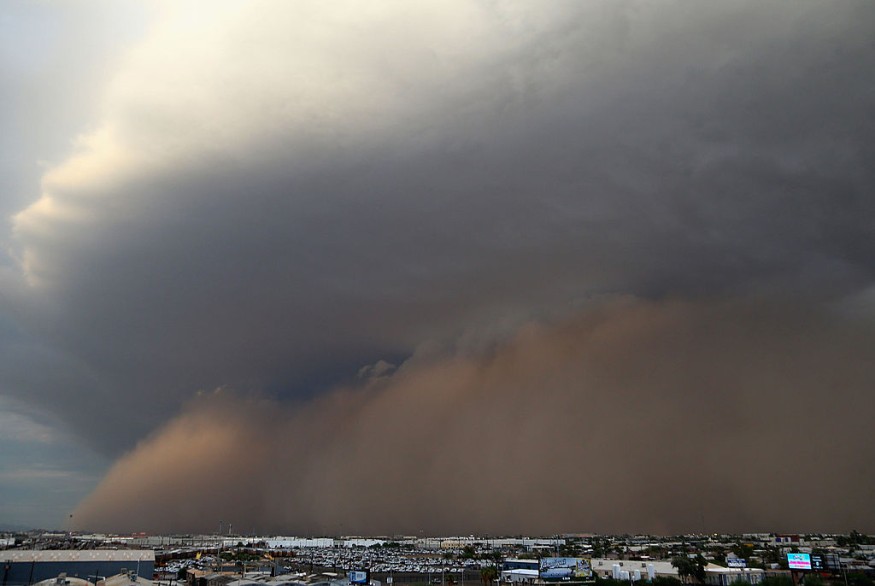Dust storms, also called as sand storms, dust clouds, or haboob, are known as a meteorological phenomenon of swirling vortex of air carrying tiny particles of debris, resulting in poor air visibility that affects travelers, as well as pose dangerous health hazards to health.
This moving mass of air is common in arid and semi-arid regions, especially in North Africa and the Middle East.
Sand storms can also be found in other parts of the world, including the United States and other countries in East Asia, including China and Mongolia.
In the past, dust clouds have caused multiple road accidents and even casualties along major highways in the US.
They are also known for their destructive impacts on crops and agricultural industry as a whole.
The frequent occurrence of haboobs, which can stretch for miles and reach thousands of feet high, can reportedly cause land degradation, environmental damage, severe air pollution and damage to livestock.
Now, a new study led by scientists from China suggests that dust storm activity in East Asia is on a decline due to various natural and human-induced factors since the start of the 21st century.
East Asia Dust Storm Activity

The study was published in the journal Nature Communications on November 19 where researchers explored the drivers or factors of the recent decline of dust activity over East Asia.
Using dust emission mode, they were able to show the weakening of surface wind, increase of vegetation land, and soil moisture have all contributed to the said dust storm activity decline from 2001 to 2017.
In a news release on December 21, researchers from the Chinese Academy of Sciences revealed that East Asian dust activity has decreased significantly in recent decades, particularly during the dust period between 2000 and 2002.
Professor Lin Zhaohui, the study's co-author, said dust emission depends on various factors, including surface winds, vegetation cover, soil conditions, and human disturbances, as cited by Phys.org.
What is a Dust Storm?
According to the National Oceanic and Atmospheric Administration (NOAA), a dust storm is a "wall of dust and debris" which is blown into a certain area by strong winds coming from thunderstorms.
The said wall of dust created by a dust storm can cover a vast area or region that can span from one continent into the other, with sand storms coming from Africa into Europe as an example.
In the US, dust storms are commonplace in the Southwest region, where it peaks during spring time approximately from March to May each year.
On certain days, sand storms can carry a lot of dust into the air.
Scientists estimate that these dust clouds carry an average of 44 billion pounds (20 teragrams) of dust in Earth's atmosphere, as cited by the NOAA.
In particular, dust storms are caused by very strong winds, which are produced by thunderstorms, as hinted earlier, according to the US government agency.
In dry regions, these winds can pull dust from the ground up into the air.
Unlike tornadoes, which also carries debris form the ground, a haboob is relatively larger and lasts longer.
© 2025 NatureWorldNews.com All rights reserved. Do not reproduce without permission.





